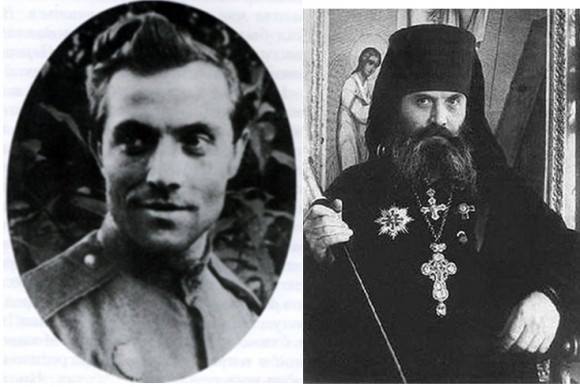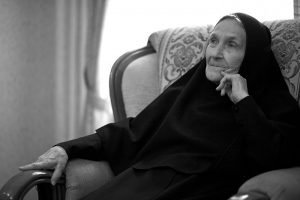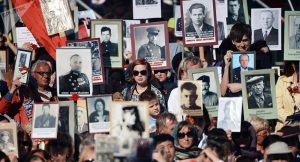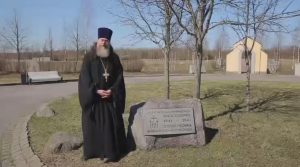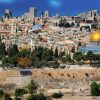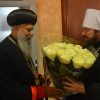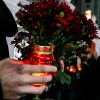The young artist Ivan Mikhailovich Voronov followed the bloody trail of war the entire way from Moscow to Berlin with a rifle on his right shoulder, a sketchbook and set of paints on his left.
The artist returned safe and sound from the war. He never could have imagined that he was destined to rebuild the Pscov-Caves monastery and return a precious sacristy there. Not long after Voronov took his monastic vows. He supervised the restoration works of the Trinity Lavra of St. Sergius near Moscow for ten years.
Art critic Savva Iamshikov says, “People would often ask me why such a handsome man became a monk? People around talked about how he had been badly wounded and could no longer have children… And then, one time, he himself brought up this subject and said, ‘Savva, that is only idle talk! It’s just that the war was so horrible, so dreadful, that I promised to myself that if I survived I would become a monk and would fight against any future wars.’”
Once, Patriarch Alexey I said to Father Alypy in a private conversation, “The Pscov-Caves monastery is falling apart. Take charge of it.” And that’s how a former artist was appointed Abbot of the Pscov-Caves monastery.
In the spring of 1960, life got very busy at that monastery. Scaffolding was put up all around the crumbling ramparts and towers. Workmen prepared the mortar and the limestone tiles for the restoration of the lost fragments of the monastery ramparts. Abbot Alypy himself could be seen on top of the scaffolding with a trowel in his hands alongside the workers.
They remember Father Alypy well not only in the Pscov-Caves monastery, but in the Tirinity Lavra of St. Sergius as well. An artist by training, throughout his entire life he was also an avid collector of paintings and other works of art. Today, decades later, we may justly call father Alypy the “Tretiakov” of the Pscov Caves not only because of his collection of paintings and masterpieces of arts and crafts, but also because of his generous contribution to the museums of Russia. The collection of wonderful paintings and graphics became his life’s work. It was divided between three museums: the Russian Museum, the Pscov Urban Conservation Area, and the Pscov Regional History Museum.
Father Alypy was a complex, many-sided person. He died on March 12, 1975 during Cheesefare week. His passing was announced by the tolling of the big bell. He had lived for sixty-ones years on this Earth. Of these, twenty-five he spent as a monastic, experiencing many spiritual joys as well as great sorrows during those days.
Translate from the Russian by Maria Nekipelov












